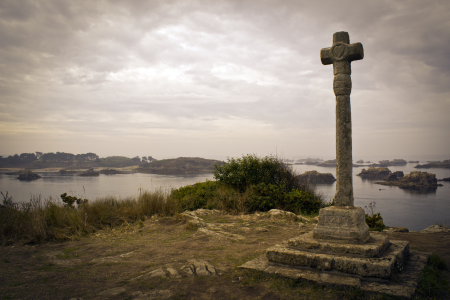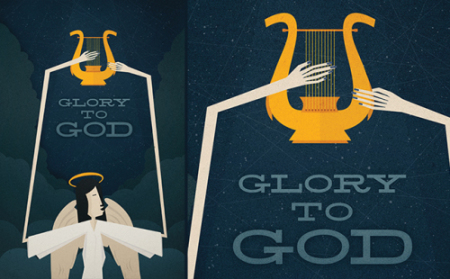is the new testament reliable?
III. The Difficulty of Trusting Ancient History:

“All of this information in the Gospel is old, ancient history. We cannot make major decisions of life and death based on old events of history that might or might not have taken place. Ancient history is by its very nature unreliable”.
This objection is one that takes a couple of different positions. First, some people view history (the events of the past) as not reliable in general and dependent upon the biases of the sources. While it is true that history is not a science that can be proven with 100% certainty, we can know certain history with a very high degree of probability. It is also true that many things that have been recorded and are proposed to be history, when examined, prove to be very uncertain if not completely implausible.
Some would propose that ancient history by its very age becomes unreliable.
The question then should be asked – How old is “too old”? When does the record of past events become unreliable? Is 500 years too old or is 50 years too old? Who establishes the “too old” category? The weakness of this position is self-evident in that it becomes an arbitrary standard that can be conveniently set so as to eliminate historical records that we may disagree with. We must judge all history on its own merits, not on the basis of how old it is. This skeptical view of history is derived from a relativistic worldview that attempts to affirm that history is biased and cannot be trusted as reliable. While it is true that the recording of history is not bias-free, it is a cynical viewpoint that would affirm that all historical records are unreliable because they may contain human biases.
Attorney Craig A. Parton has written regarding this – “History, law and science are never completely 100% certain of their conclusions. They must always have some sense of humility and openness to being shown they are wrong and in need of correction if the facts turn out to be otherwise. Regardless of this, though, we continue to make life and death decisions based on probability evidence.” – Craig A. Parton, Religion on Trial, 2008, page 34.
1. Was the Gospel copied from “ancient mystery religions”?
There are popular “theories” that are proclaimed by some that the Gospel is derived from ancient mystery religions. This concept is referred to as the copycat theory. This objection to the Gospel proposes that the story of Jesus Christ that is found in the New Testament is derived from the myths and legends of the first century referred to as “the mystery religions”.
These mythological religions such as Mithrism, the Egyptian gods Osiris and Horus and the religious teacher Apollonius of Tyana, along with others, are affirmed to be the sources for the Gospel and it is asserted that the proof of this is in the numerous parallels found between them, such as the virgin birth of Jesus, His miracles, His death on the cross and resurrection from the dead.
The following is a listing of authors and their writings in which have provided research on this subject matter:
1. J.P. Holding – Confronting the Copycat Thesis – Sept. 2007, www.tektonics.org.
2. Unmasking the Pagan Christ – Stanley E. Porter, Stephen J. Bedard
3. The Case for the Real Jesus – Lee Strobel.
4. The Jesus Legend: A Case for the Historical Reliability of the Synoptic Tradition – Paul Rhodes Eddy and Gregory A. BoydSee: Kersey Graves book – The World’s Sixteen Crucified Saviors. A presentation of the “copycat theory” which attempts to link the mystery religions with the Gospel.
There are numerous problems with this copycat theory and we will look at only a few limited areas of concern.
First, the Gospel writers and apostles were Jewish Christians and were a part of a community that was probably the most resistant of any culture in that time period (first century) to the inclusion of pagan religious materials. The apostle Paul, who wrote the majority of the books of the New Testament, was a very religious, orthodox Jew and by his own cultural training would be highly opposed to pagan philosophies and legends. The early church was also predominately Jewish in culture and the idea that the Christian Faith would borrow from pagan Gentile religions is highly unlikely. To assert this type of a connection between the Gospel and the mystery religions must be done on very solid evidence and this type of evidence is not found anywhere in all of the first century.
Second, there is not much that historians can really know regarding these “mystery religions”. Most of the information regarding them is based on very subjective material. To attempt to connect these religions with the Christian Faith is very difficult at best based on the fact that we can know so very little regarding their belief systems.
Third, the most significant parallels that are alleged to exist between the Gospel and the mystery religions cannot be substantiated before A.D. 100. This is well after the Gospel and the New Testament documents were written. To assert that these mystery religions were the source for the Gospel cannot be maintained because the facts of the Gospel were already firmly established. If there was any type of borrowing, it would be much more likely that the mystery religions borrowed from the Christian Faith rather than the other way around.
Scholar Ronald H. Nash stated regarding these mystery religions –“It is not until we come to the third century A.D. that we find sufficient source material (i.e., information about the mystery religions from the writings of the time) to permit a relatively complete reconstruction of their content… information about a cult that comes several hundred years after the close of the New Testament canon must not be read back into what is presumed to be the status of the cult during the first century A.D. The crucial question is not what possible influence the mysteries may have had on segments of Christendom after A.D. 400, but what effect the emerging mysteries may have had on the New Testament in the first century.” –Ronald H. Nash – Was the New Testament Influenced by Pagan Religions? – published by the Christian Research Journal, 1994.

Fourth, when these alleged parallels are examined – virgin birth, death and resurrection, incarnation of Christ…. with the concepts of the mystery religions, the parallels become less and less viable. The blood sacrifices, resurrection or resuscitation events of these religions are not presented on the same historical basis as the Gospel but rather are legendary and ”other-world based”, not related to time and space.Fifth, even if it was granted that these parallels are valid, it would not logically follow that simply because the parallel exists, that one borrowed from the other. There are numerous examples of the fallacy of this type of reasoning. One example would be Achilles, the fictional character in Homer’s Iliad. There are many similarities and parallels between Achilles and Alexander the Great, but no one seriously would consider Alexander the Great to be a fictional character derived from the Iliad.
The same would apply to the person and work of Jesus Christ. If parallels did exist between the mystery religions and the Gospel, it does not logically follow that one is derived from the other.Lastly, there is at present, no serious scholarship that provides data and evidence in support for a connection between the Gospel of Jesus Christ and the mystery religions. Even the most ardent antagonists of the Gospel concede that the personages of these cults were mythological and not historical in nature. The Gospel on the other hand, is written and presented in terms centered in the facts of history. The life of Jesus is placed in time, in numerous geographical settings, occurred in public events… and presented on the basis of eyewitness testimony. On can certainly decide not to believe the Gospel, but to do so on the basis of an alleged connection to these mystery religions is not an evidence based objection.
2. Was the Gospel formed by biased individuals who corrupted it and excluded other “gospel“ information?
Dan Brown, in his best-selling, fictional book and movie – “The Da Vinci Code”, asserts that the four Gospels – Matthew, Mark, Luke and John, were somehow chosen by the first and second century church and other equally deserving “gospels” were discarded. Brown’s character in the book, Leah Teabing claims that these other gospels were unfairly discarded. – “More than eighty gospels were considered for the New Testament, and yet only a relative few were chosen for inclusion – Matthew, Mark, Luke and John among them.” – The Da Vinci Code – Dan Brown, page 231.There are some liberal New Testament scholars, such as those of the Jesus Seminar (a controversial group of skeptical NT scholars) along with others who would agree with this type of assertion.
They would place value on documents such as the Gospel of Thomas, the Gospel of Philip, The Gospel of Mary Magdalene and others, and would affirm that these writings were oppressed and unfairly rejected in favor of the canonical four Gospels. There are many problems with this viewpoint.First, these documents were written much later than the four canonical Gospels.
The Gospel of Thomas – dated no earlier than A.D. 140.( A few scholars have dated this document late first century, however the majority place it in the first half of the second century)The Gospel of Judas – dated A.D. 130-170The Gospel of Philip – dated 3rd centuryThe Gospel of Mary Magdalene – dated 2nd century(For a detailed listing and dating of these writings, see – A General Introduction to the Bible – N. Geisler.)Second, the witness of the apostolic and early church fathers affirm the four canonical Gospels as the only “accepted” records of the life and work (the “good news”) of Jesus Christ. The early church fathers such as Irenaeus, Clement of Alexandria, Justin Martyr, Origen, Papias and Tertullian affirm the witness of the four canonical Gospels as being the only reliable Gospel records.
Third, these other “gospel” documents were written by Gnostic and Docetic Christian groups and authors whose motives were not to record accurate Gospel information, but rather were centered in a “higher knowledge” type of narrative. Some of these documents teach polytheism, pantheism and provide very contradictory views of Jesus when compared to the canonical Gospel record’s presentation of Christ.
Geisler states regarding these books:“During the first few centuries, numerous books of a fanciful and heretical nature arose that are neither genuine nor valuable as a whole. Eusebius called these “totally absurd and impious”. Virtually no orthodox Father, canon or council considered these books to be canonical and, so far as the church is concerned, they have historical value only, indicating the heretical teachings of Gnostic, Docetic and ascetic groups, as well as the exaggerated fancy of religious lore in the early church. At best, these books were revered by some of the cults and referred to by some of the orthodox Fathers, but they were never considered canonical by the mainstream of Christianity.
There was apparently a large number of these books even in the first century (cf. Luke 1:1,2). By the ninth century, Photius listed some 280 of them and more have subsequently been discovered.”
Geisler states regarding their value:
“1. They contain, no doubt, the kernel of some correct traditions that, by careful ‘demythologizing’ may furnish some supplementary historical facts about the early church.
2. They reflect the ascetic, Docetic and Gnostic tendencies and heresies of early Christianity.
3. They show a popular desire for information not given in the canonical Gospels, such as information about the childhood of Jesus, and the lives of the apostles.
4. They manifest an illegitimate tendency to glorify Christianity by means of pious frauds.
5. They display an unhealthy desire to find support for doctrinal interests and heretical teachings under the guise of apostolic authority.
6. They reveal an unwholesome attempt to fill up supposed lacks in the canonical writings.
7. They demonstrate the incurable tendency of depraved curiosity to arrive at heretical and fanciful embellishments of Christian truth (e.g. Mary worship).” – A General Introduction to the Bible, Norman Geisler. Moody Press, pages 199, 206.

There is no question that the early church was the instrument for the verification and acceptance of which books were apostolic in nature and recognized as “canonical” (the authoritative and accepted standard). A book had to be apostolic in origin, written by an apostle or approved by apostolic and eyewitness testimony. If one examines the process by which books were accepted into this canon or standard of accepted books, it will be evident that this process was a slow, deliberate and investigated procedure.
Any suggestion that unfair and deceitful actions were deployed in order to oppose worthy documents from inclusion into the canonical collection of New Testament books does not stand with the facts. The reason that the early church rejected these “gospels” and documents is because they did not meet the tests for canonicity. They were not apostolic in origin, they were written after the apostolic period and they promoted concepts and teachings that were not in agreement to the Gospel record delivered by the apostles. Why are these books now being promoted as “Gospel” documents?
New Testament theologian, N.T. Wright states that the reason these books are of such an interest to some is because they agree with the present “social and religious (or indeed anti-religious) fashions…. Anything will do…. As long as it is not classic Judaism or Christianity.” – N.T. Wright; Judas and the Gospel of Jesus, pages 123,124,126. (Also see The Historical Reliability of the New Testament – second edition, Darren Hewer 2007-2010 for excellent information regarding these issues).
The promotion of false gospels is certainly nothing new and the evident nature of this fact is seen in these early century attempts to modify and corrupt the Gospel. However, the testimony of the Scriptures warns us that these efforts to teach and preach a different “jesus” will be a part of the on-going preaching of the Gospel. It is our task to expose these “gospels” as false and to work with great effort to preach the true, Bible based, Christ centered Gospel of Jesus Christ.
3. Old history is neither reliable nor relevant history. How can ancient history be trusted?
The third position that people take is to affirm that ancient history does not have any direct impact on me, so why worry about it? It is true that much of history does not have a direct impact on us. The events of Roman and Greek history for instance probably may appear to have no connection to our lives. We live out of lives and this information is not pertinent to the way we live nor does it have any effect on the choices and decisions that we make. However, some historical events do have bearing on us. If the Creator God exists and if the Bible is an accurate account of His history (His Story), then what the Bible has to say and the information contained within its historical and narrative record does have an eternal impact on our lives. The point of this presentation is that the evidence for the factual nature of the Gospel and the resurrection of Christ is well documented and provides us with a high probability for the truth claims of Jesus Christ.
Jesus said – “Unless you believe that I Am who I claim to be, you will die in your sins”. – John 8:24 NLT. Jesus also said – “I am the way, the truth and the life. No one can come to the Father except through Me”. – John14:6 NLT.If the events of the Gospel and the resurrection of Christ are true, then this is history that has a very significant impact on all of us.